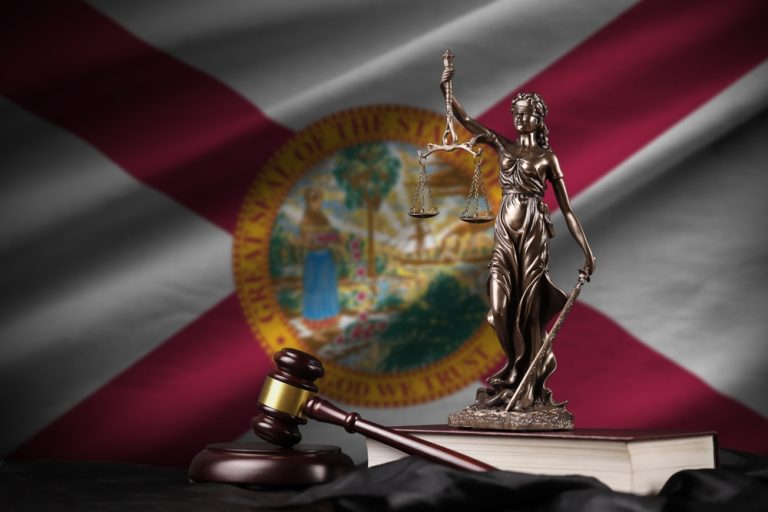Top Secret: How to Successfully Build a Trade Secrets Case
Top Secret: How to Successfully Build a Trade Secrets Case
Originally published by IPWatchdog on October 1, 2019 and republished with permission.
When an employee who has left a company to work for a competitor shares a coveted trade secret, his or her former employer can experience devastating effects, including lost business and reputational damage.
As a result, the former employer may want to file a lawsuit; and to stop the former employee and the competitor from using the proprietary information while the suit is pending, the employer can also seek preliminary injunctive relief.
Preliminary injunctive relief requires an evidentiary showing that the former employer is suffering irreparable harm. That is, harm that cannot be remedied with money damages. The former employer must also show a likelihood that the employer will prevail on its claim against the former employee. As such, the former employer must develop preliminary evidence that the information taken is a secret that is not readily ascertainable from public sources, that the employer took reasonable precautions to protect the information from disclosure, that the former employee took the information without authority and is using the information or has disclosed the information to others. If successful, the former employee, and those acting in concert with the former employee, will be enjoined from using the former employer’s information while the litigation proceeds. As such, seeking and obtaining preliminary injunctive relief can, and is often, an important milestone in a trade secret case.
To increase the likelihood that the request for an injunction will be granted, practitioners should, at the outset, thoroughly evaluate the facts and ensure that there is sufficient proof that a former employee has misappropriated information that will qualify as a trade secret.
The Key Elements of a Trade Secret Case and Required Proof
The first questions any practitioner should ask their client are: “Why is the information taken a secret?” “Does the information derive economic value from not being generally known?” and “How did the client protect the information from disclosure?”
Often, the success of any trade secret case depends on the steps the client took before a misappropriation occurs. Defendants will often challenge the client’s case by arguing that the information is not secret and derives no independent economic value from being a secret, or that the client failed to take reasonable steps to maintain the confidentiality of the information.
A good number of trade secret cases often involve the misappropriation of a former employer’s customer list. In these instances, it is important to show that the information on the customer list is not readily ascertainable from public sources and was the product of significant expense or effort. While some information on a customer list may be obtained from reviewing publicly available information, other personalized details about a customer such as the name and cellphone number of a purchasing manager; information about the products purchased, the prices paid or discounts obtained; a customer’s purchasing, shipping and payments history; a customer’s preferences; and other personal details that the client has developed over time can be protectable. Information that a competitor could not obtain without investing the time and resources that the client invested.
Information does not have to be tangible to be protectable. Even if a former employee memorizes his or her former employer’s customer list, they are not permitted to take and use confidential information gained during employment.
Second, the client must have taken reasonable steps to keep the information secret. Is the information protected by a password? Is the information restricted to only those who need the information to do their job? Did the employee sign a non-disclosure agreement? Does the client have a confidentiality policy? If the answer to at least some of these questions is “yes,” then there is a strong likelihood the former employer will prevail not only at a preliminary injunction stage, but in the case, if the former employer can then establish that the former employee took the information.
Often, the former employee will deny taking his or her former employer’s information. This can be shown by establishing forensically, that the former employee accessed the confidential information prior to leaving and/or copied the information or downloaded the information to an external device. Alternatively, the “taking” can be established circumstantially through the former employee’s subsequent commercial use or disclosure.
Showing that the former employee is using or has disclosed the information is not always straightforward. Typically, the former employee has started or joined a competing business, and the former employer starts experiencing business difficulties or interruptions or loses customers outright.
For instance, the former employee was included in confidential sales meetings discussing an ongoing purchase negotiation. The employee quits, becomes employed with a competitor, and soon thereafter, the competitor is competing for the same sale. The former employer now has to offer pricing or other concessions to keep the sale or loses the sale to the competitor. Proof will typically require discovery from the former employee, the former employee’s new employer or the competing business.
A practitioner will want to know when the competitor began communicating with the customer for the same sale. Maybe the competitor had some preliminary communications with the customer, but documents show that after hiring the former employee, the communications increased, became more specific to the product at issue or that the competitor offered pricing that reflected some knowledge of the former employer’s prices or discounts. This type of proof may also require discovery from the former employer’s own customers. Often, clients do not want attorneys to interfere with customers, and customers are often reluctant to get involved in business litigation between competitors. The decision to involve the customer is something practitioners need to discuss with their client, but ultimately, the client will need to make a business decision on how to best proceed.
A final key element is damages. For injunctive relief, a practitioner must establish irreparable harm to the client caused by the misappropriation. Irreparable harm can come in many forms, with reputational harm and loss of goodwill often in the lead. A client can be irreparably harmed in other ways as well. For instance, it can be very difficult to claw back secret information once it has been disclosed, and the ramifications to the client may be difficult to ascertain or have a lasting impact to a client’s business.
Assessing the Damage
Injunctive relief does not end the analysis, as a client can also recovery monetary damages, including the client’s actual loss caused by the misappropriation and the unjust enrichment caused by the misappropriation that is not taken into account in computing actual loss. Actual loss can include the client’s lost profits, lost customers or lost market share. Unjust enrichment damages can include the former employee’s unjust enrichment, but also the unjust enrichment of others, such as the former employee’s new employer. This will require discovery from the former employee and/or his or her new employer regarding the profits obtained from the misappropriation. The analysis will often also require the assistance of an expert witness to assess the books and records of the former employee and/or the new employer to determine whether there has been an appropriate accounting of revenues and expenses.
A practitioner must also establish that the damages were caused by the misappropriation; that is, the damages were the natural, proximate, probable or direct consequence of the misconduct. Such causation can be established by showing that the former employee’s conduct was a foreseeable and substantial factor in causing the former employer’s loss. Direct evidence from a customer as to why they chose not to purchase from the former employer is not necessary. A fact finder can reasonably infer causation from circumstantial evidence such as proof of the misappropriation and the former employee’s subsequent commercial use. For instance, if a former employee begins contacting his or her former employer’s customers armed with acute knowledge of the customer’s needs and requirements, a fact finder can infer that the misappropriation caused the former employer to lose the customer’s business.
In some states, such as Florida, a client can also recovery exemplary damages up to twice the amount of actual and unjust enrichment damages sustained upon proof that the misappropriation was willful and malicious. Further, evidence of willful and malicious misappropriation can also support an award of attorney’s fees to the prevailing party. Such willful or malicious intent can be established by evidence of a course of wrongful conduct. Did the former employee attempt to hide evidence of his or her conduct by deleting emails to the former employer’s customers? Did the former employee attempt to hide evidence of his or her communications with his or her new employer? Did the former employee lie to the former employer’s customers about his or her former employer? Did the former employee lie to his or her new employer about the source of the information disclosed, or whether a non-disclosure agreement had been signed. This list is not exhaustive, and each case has to be evaluated on its own facts.
Take Proactive Steps to Avoid Costly Litigation
Trade secret litigation can be costly and protracted. Sometimes, obtaining a preliminary injunction at the outset of filing the case can bring about an early resolution, but that may not always be the case. A former employee or even his or her new employer may feel they have a right to retain the information, that the information is not secret or that the information was lawfully obtained and may seek to have the injunction modified or set aside. If unsuccessful, they can also seek an appeal. If no preliminary injunction is entered, then litigants may be in the litigation for the duration. In either event, it is important to discuss the risks associated with the litigation and the potential costs to the client.
However, attorneys can help clients avoid trade secret litigation by advising clients to take proactive measures. As mentioned above, clients should be advised to have employees sign non-disclosure agreements acknowledging the nature and scope of the client’s confidential information. Under appropriate circumstances, employees can also be required to sign a non-compete agreement. Such agreements can provide for injunctive relief in the event of a breach. Confidential information can be restricted and/or password protected. Clients can also include a policy on maintaining company information confidential and have the employee acknowledge that he or she has read and understands the policy and agrees to abide by the policy. While such measures may not stop an employee from misappropriating a client’s confidential information, they can be helpful to prevent protracted and costly litigation in the event confidential information is misappropriated.






